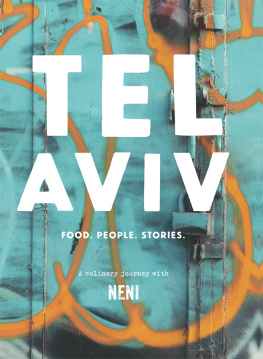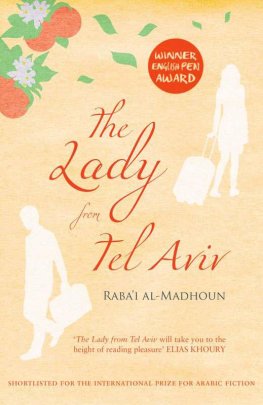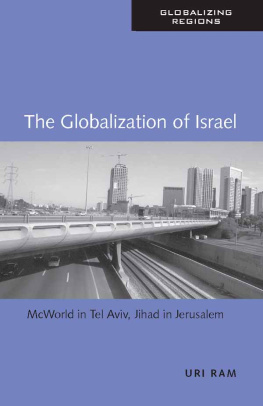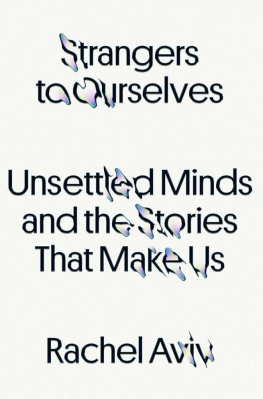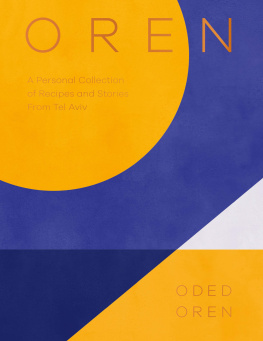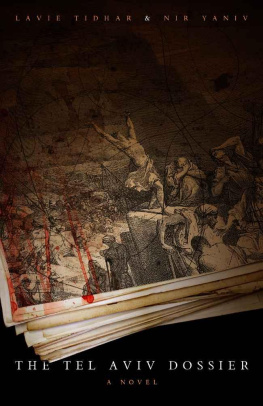Tel Aviv is colourful, cosmopolitan and modern; a city full of contrasts, fragrances, stories and flavours. It is a vibrant melting pot of cultures, religions and delicious culinary traditions.
Haya Molcho and her four sons take us on a journey to meet Tel Avivs local chefs and story-tellers from the epicures and the urban forager, to the magician and the survivor capturing the special spirit of the citys many cuisines and inhabitants. Haya revisits the recipes of her home town, re-creating the flavours of her childhood: knafeh, green shakshuka, sarma, Israeli paella, pickled lemons and much more.
Haya Molcho loves to cook and to travel. Born in Tel Aviv, she relocated frequently and was always on the move with her parents as a child, then as an adult, alone, and later with her husband, the mime artist Samy Molcho. On her travels she experienced the cuisines of the world and developed her unique culinary style: typically Israeli, yet also international. In 2009 she opened the first NENI restaurant in Viennas Naschmarkt with her sons, Nuriel, Elior, Nadiv and Ilan. The idea of bringing Mediterranean and Levantine food culture to Europes cities was a success: today there are NENI restaurants in Berlin, Hamburg, Munich, Cologne, Zurich, Vienna, Amsterdam, Mallorca and Paris, as well as a cooking school and product lines.
FOOD. PEOPLE. STORIES.
HAYA
Name: Haya Molcho
My Role at NENI: The soul of the business
My Favourite Place in Tel Aviv: Shuk HaCarmel the Carmel Market
My Favourite Food: Eggplant from a wood-fired oven
My Tel Aviv Story: The most frequently used word during the production of the book was Yalla short for: we have to hurry!
ELIOR
Name: Elior Molcho
My Role at NENI: General Manager, Project Manager and responsible for human resources management
My Favourite Place in Tel Aviv:
My Favourite Food: Sabich
My Tel Aviv Story: I had a great time with my family in Israel where the roots of our cooking tradition are. I am pleased that through this book even more people will get to see some of the wonderful sides of Tel Aviv.
NURIEL
Name: Nuriel Molcho
My Role at NENI: PR & Marketing and the photographer for this book
My Favourite Place in Tel Aviv: The market in Jaffa for breakfast and the promenade for sunset walks
My Favourite Food: Sabich, a classic street food. Every bite contains the full flavour of Israel I always order it with plenty of amba and zhug.
My Tel Aviv Story: What I enjoyed most was spending so much time in Tel Aviv. Often when I go there I arrive and have to quickly depart again. This time I could settle in and really feel at home.
ilan
Name: Ilan Molcho
My Role at NENI: CEO & CFO
My Favourite Place in Tel Aviv:
My Favourite Food: Octopus salad with celery, oranges and potatoes
My Tel Aviv Story: What I loved most was the spontaneity. On one of our last days in Tel Aviv, we organised a small party in the kitchen, and each of us invited a few friends. Those friends brought other friends with them, and suddenly there were 200 people in front of the kitchen, partying with us until three in the morning. That is how it should be. Chaotic, sympathetic, good people, good food, a lot of dancing. Simply BALAGAN!
nadiv
Name: Nadiv Molcho
My Role at NENI: An N in NENI and a filmmaker
My Favourite Place in Tel Aviv: Bellboy and Frishman Beach
My Favourite Food: Pita shawarma
My Tel Aviv Story: I filmed all the interviews and behind the scenes as well the result was the book trailer.
INTRODUCTION
TEL AVIV
FOOD. PEOPLE. STORIES.
The atmosphere of any city is the result of the memories and dreams of the people who live there, of their hopes, worries, successes and opportunities. It also comes from its sights, sounds and smells and this is especially true of Tel Aviv. The citys very name contains poetry: Tel makes one think of old hills, of millennia-old remains, while Aviv signifies spring and new beginnings. This is a city full of contrasts. Its diversity of experiences and people creates a complex mosaic in which new impulses act on cultures and traditions from around the world.
For this book, we set off together on a discovery tour through Tel Aviv. We love the synergy between regional culinary roots and the new, innovative ideas that we feel very distinctly here. The markets of Tel Aviv are noisy hubs of activity, with Yemeni, Turkish and Iraqi businesses often standing side by side, while in the citys restaurants, the mixture of culinary influences from the entire world arrives right at your table. Street food is ubiquitous and brings people together through the intimacy of having food placed in ones hands. It is in this vibrant community that we found our interview partners, who graciously and openly talked about their lives with us.
For two weeks, in preparing for this book, we lived in the rhythm of this city. All of the dishes were prepared here, all the ingredients were purchased fresh at the markets, and we met our interview partners at the places where they live and work. We were able to visit an eighth-generation Arab fisherman on his trawler and his younger Jewish collaborator who supplies fish to the citys top restaurants. We rode around Tel Aviv with a blogging taxi driver. We received a warm welcome both at a traditional bakery run by Uzbek immigrants and at a stylish patisserie that wouldnt be out of place in Paris. Through all of the people we met and places we visited, we found something of the distinctive character of this wonderful city and gained historical and sociological insights into its culinary traditions and latest trends.
Tel Aviv is also the city where Haya was born and raised. From her early childhood, she has particularly vivid memories of the colourful stands of the street vendors where the sweet and refreshing cactus fruit known as sabra was piled high on a bed of ice blocks. And of tiras, corn cobs grilled over an open fire on the beach. Samy, Hayas husband and a famous pantomime, also has very clear memories of his early years in Tel Aviv. Eighty years ago, he grew up in the drained swamp on the border to Jaffa and watched as the White City grew on the other side. He remembers the smell of the earth on Shabbat, when the streets were sprinkled with water, and the waves of immigrants who have been bringing their own culture and food with them for over sixty years. In the 1930s and 40s, many people came here from Germany and the rest of Europe, later from Yemen, Iraq and other Arab countries, and then from Russia and Ethiopia. Each group brought its artists, singers and actors to Tel Aviv. Today the artistic trends and innovations of this city make themselves felt throughout the world. In this way, Tel Aviv has been and remains an inexhaustible source of inspiration, and we return to this city again and again.

